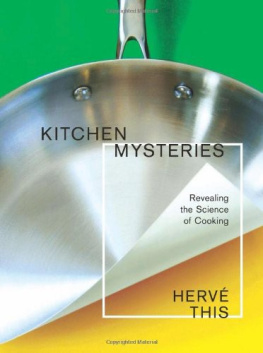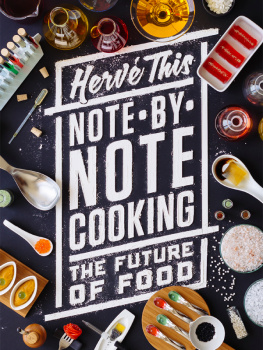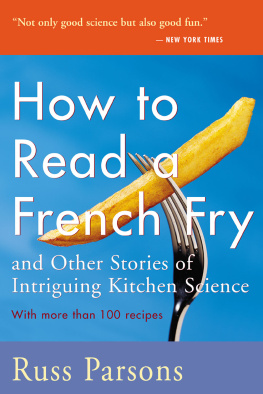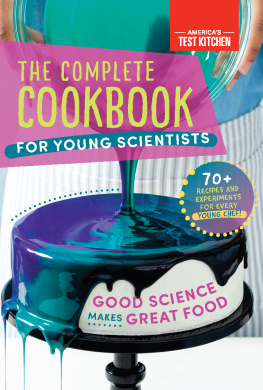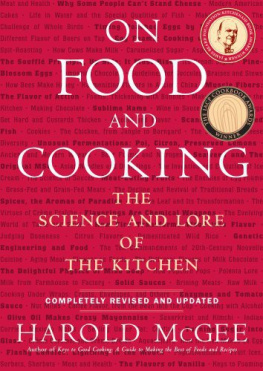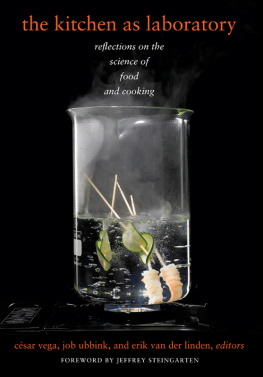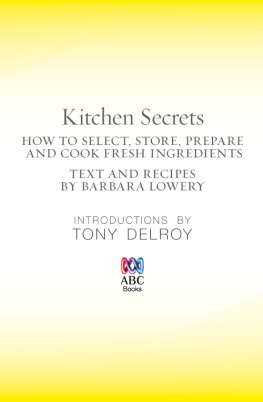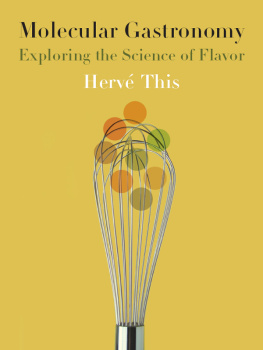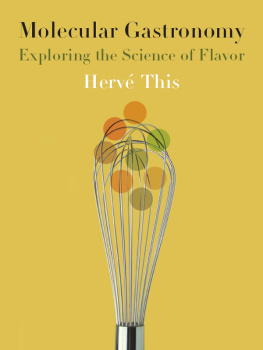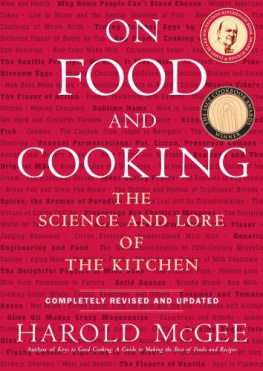Hervé This - Kitchen mysteries : revealing the science of cooking = Les secrets de la casserole
Here you can read online Hervé This - Kitchen mysteries : revealing the science of cooking = Les secrets de la casserole full text of the book (entire story) in english for free. Download pdf and epub, get meaning, cover and reviews about this ebook. City: New York, year: 2010, publisher: Columbia Univ Pr, genre: Romance novel. Description of the work, (preface) as well as reviews are available. Best literature library LitArk.com created for fans of good reading and offers a wide selection of genres:
Romance novel
Science fiction
Adventure
Detective
Science
History
Home and family
Prose
Art
Politics
Computer
Non-fiction
Religion
Business
Children
Humor
Choose a favorite category and find really read worthwhile books. Enjoy immersion in the world of imagination, feel the emotions of the characters or learn something new for yourself, make an fascinating discovery.
- Book:Kitchen mysteries : revealing the science of cooking = Les secrets de la casserole
- Author:
- Publisher:Columbia Univ Pr
- Genre:
- Year:2010
- City:New York
- Rating:4 / 5
- Favourites:Add to favourites
- Your mark:
Kitchen mysteries : revealing the science of cooking = Les secrets de la casserole: summary, description and annotation
We offer to read an annotation, description, summary or preface (depends on what the author of the book "Kitchen mysteries : revealing the science of cooking = Les secrets de la casserole" wrote himself). If you haven't found the necessary information about the book — write in the comments, we will try to find it.
Fans of Curious Cook Harold McGee will relish the latest from This (Molecular Gastronomy), a French chemist and foodie hero who has helped to usher in the current restaurant world vogue for turning the kitchen into a laboratory. This uses simple questions and observations about food (Does hot pepper burn a hole in the stomach?; Why must infants not be fed sausages?) as springboards for delightful explorations into culinary scientific principles. In brief, confident chapters, he moves through assorted ingredients (milk, vegetables, cheese), cooking methods (steaming, roasting, deep-frying) and whole categories of food and drink (bread, cake, sauces, salad) in his quest to explain kitchen phenomena. The book is more practical than theoretical, as This often breezes over much of the science, focusing not on the experiments and equations that answered his questions but rather on what they mean for the cook: how to ripen tomatoes properly, why to cook a roux for a long time, and so on. He distances himself even further from typical scientific writing with his charmingly enthusiastic tone, which keeps his prose from sounding dry even when he goes into more details about enzyme properties or protein varieties, so that even those who might be turned off by the thought of food chemistry will quickly be drawn in by his obvious love of food and eagerness to apply his research to helping people cook better. (Dec.)
Copyright Reed Business Information, a division of Reed Elsevier Inc. All rights reserved.
Fans of Curious Cook Harold McGee will relish the latest from This ( Molecular Gastronomy), a French chemist and foodie hero who has helped to usher in the current restaurant world vogue for turning the kitchen into a laboratory.... Even those who might be turned off by the thought of food chemistry will quickly be drawn in by his obvious love of food and eagerness to apply his research to helping people cook better.
(Publishers Weekly Vol 450. No 22)
This has made invisible processes visible, revealed the mysteries, and the bread has risen, baked, and been enjoyed.
(Claudia Kousoulas Appetite for Books 11/16/07)
Cooks who want to learn more about the chemistry and physics that make their efforts possible will discover useful things here.
(Booklist 12/2/07)
Thiss molecular gastronomy is garnished with the authors own rich philosophy of food and flavor.
(Peter Barham Nature 3/30/08)
An exuberant paean for the role of science in cooking... Thiss book performs a great service.
(Len Fisher Times Higher Education Supplement 3/30/208)
This book should be in every kitchen.
(Christine Sismondo Toronto Star 6/11/08)
[An] eye-opening book.
(Kate Colquhoun Portsmouth Herald 8/1/08)
Witty and humorous... [readers] whose eyes glaze over at the very mention of electrons may find themselves becoming entranced by This graceful descriptions of essential chemical reactions.
(Lynn Harnett Seacoast Sunday )
Well crafted, sprinkled with insight, and containing a menagerie of information, Kitchen Mysteries is a wonderful trip down a stellar buffet line.
(J. Edward Sumerau Metro Spirit )
Kitchen Mysteries is another tour de force for the French scientific chef... Highly Recommended.
(Choice )
Thiss book offers expert explanations that give the reader a better understanding of both cooking and cuisine. As such, it is enticing.
(Pierre Laszlo Chemical Heritage )
Hervé This: author's other books
Who wrote Kitchen mysteries : revealing the science of cooking = Les secrets de la casserole? Find out the surname, the name of the author of the book and a list of all author's works by series.

